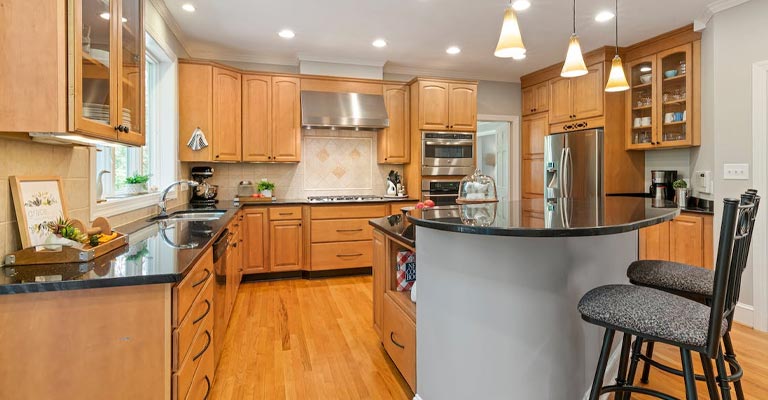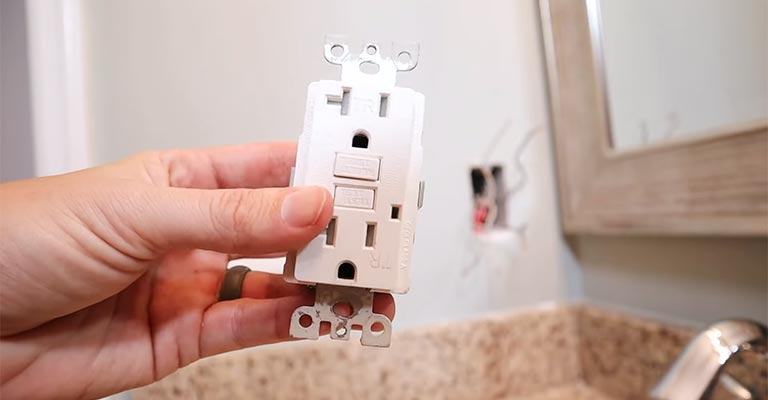It is not necessary to have GFCIs on all kitchen outlets, but they must be on outlets that serve a sink or countertop within six feet of that outlet.
Near the sinks in the laundry room. The GFCI should be installed on any receptacle within 6 feet of a sink or washing machine. In close proximity to your water heater.
A GFCI receptacle is required in kitchens of dwelling units where the receptacle is installed to serve countertop surfaces, according to the NEC (NFPA 70 2011 edition). There is no mention of a distance requirement in the kitchen.
If the sink is located outside of the kitchen, the distance requirement is 1.8 meters (6 feet). The GFCI protection in dwelling units is discussed in Section 210.8 A of NFPA 70 2011 Edition.
Do All Of The Outlets In My Kitchen Need To Have Ground-Fault Circuit Interrupters?
It is recommended that all outlets that are used to serve countertops be protected by GFCIs.
You can use such outlets to power counter breakfast bars (open counter surfaces above sinks that used to be sat at on the opposite side of the sink), as well as those on walls, behind wet areas (sinks, etc.).
GFCI Outlet Installation
As a result, the branch only needs one GFCI outlet as its first outlet to provide that protection.
If you can easily identify that outlet, it would be closest to the serving breaker (not necessarily physically, but electrically).
The rest of your outlets on that branch are protected as long as that first outlet is a GFCI.
GFCI Requirements

A lot of places in your home can make contact between water and electricity, which makes water and electricity a dangerous combination. GFCI outlets are most important in these places.
You should install GFCI outlets in the following areas when building a new house or updating an existing one:
The key areas of the kitchen. The GFCI isn’t required on every kitchen outlet, but it’s required if it’s within six feet of a sink or serves a countertop.
Near the laundry room sinks. A GFCI should be installed on any receptacle within 6 feet of a sink or washing machine.
In the vicinity of your water heater. GFCIs should also be installed within six feet of your water heater, just as they are for your washing machine.
The exterior of your home. Your home’s exterior outlets are located outside. As required by the National Electrical Code, they should also be GFCIs. Additionally, the outlets should be protected from the elements when they are not in use with watertight covers.
The bathroom in your home. Outlets near sinks are not the only ones affected. GFCI outlets should be installed in all bathroom outlets.
Your garage. Although most of us don’t associate a garage with water, electrical and water accidents are more likely to occur there, since water heaters are typically located in the garage and electric garden equipment is often plugged into the garage outlets.
One basement outlet. There should be at least one GFCI outlet in an unfinished basement.
The crawl space. There are few receptacles in crawl spaces, but if you do have one there, it’s definitely susceptible to moisture damage.
Wet bars. A bar with a sink should only be served by GFCI outlets.
Radiant floor heating systems. GFCI protection is required for floor heating systems. Use a GFCI circuit breaker, a GFCI thermostat, or tap off the protected side of a GFCI outlet to accomplish this.
When Were GFCI Outlets Required?

National Electric Code (NEC) first mandated GFCI outlets in 1971. Most people don’t realize that laws have expanded where these outlets should be located in order to ensure their safety.
In recent years, they have become increasingly common, and they are now required everywhere that is wet or damp, such as:
- Bathrooms
- Kitchens
- Unfinished basements
- And outdoor locations
Final Words
Whenever a water source is within 8 feet of an outlet that supports a convenience plug-in, the outlet must be GFI protected.
According to the new NEC, fixed appliances including fridges require a separate non-GFIC circuit (home run).
It is required that these non-protected circuits be solely dedicated to one appliance and connected to only one outlet. Dishwashers, garbage disposals, vent fans, and most permanent motor loads fall into this category.
You shouldn’t try to replace an older outlet with a GFCI without professional training if you’re dealing with older wiring. Consider having your outlets updated by a licensed electrician so that they are safe and up to code.








